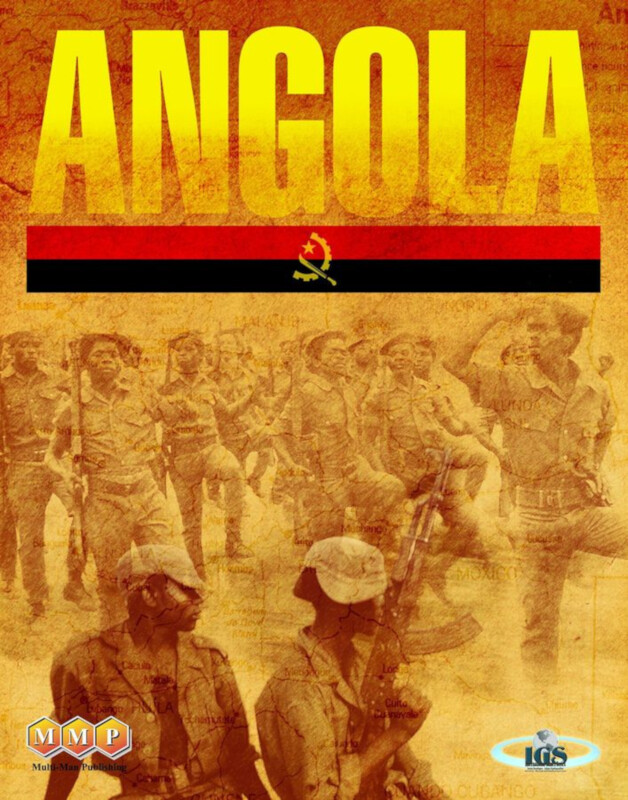An Afternoon Deep in Angola
By Mitch Reed
Recently I was invited to play Angola a great four player game from Multi-Man Publishing. The covers the conflict in Angola from July 1975 until the following April and features the four main factions that were involved in the conflict. I have always been interested in picking up with game due to the topic but after playing it I really came to see what a great game Angola is.
The Invite
The game itself was hosted by the award-winning game designer Volko Ruhnke and the other players were also some big names in the industry, with Jason Matthews (Twilight Struggle) and Kevin Bertram (Tripoli & ). I was filling in for Sebastian Bae, whose antics covered before caused him to be sidelined for the follow-on session of the game which opened a seat for me. After I promised not to go “ballsy Halsey” during the game my invite was secured, and I was ready for a day of great gaming.
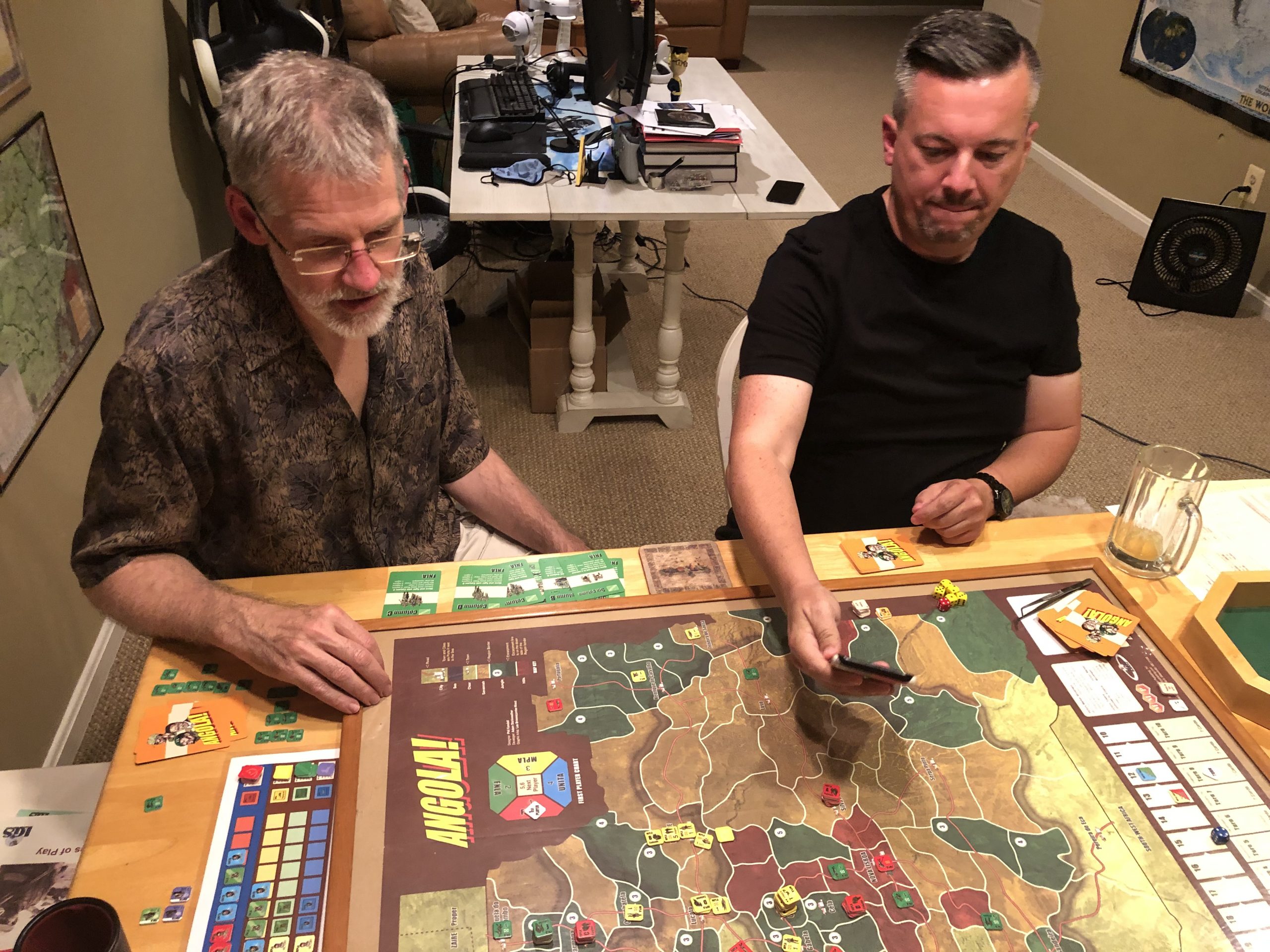
The Game
Angola is an area move game played in monthly turns where the Communists FAPLA and MPNA play against the anti-Communist UNITA and FNLA. The key to the game is to control the cites and town in Angola and depending on the turn the number of locations you are holding can end the game in a victory. The Angolan Civil War was also a proxy conflict between the west and the Communist bloc, so the forces of Cuba, South Africa and a host of mercenary armies also appear in the game.
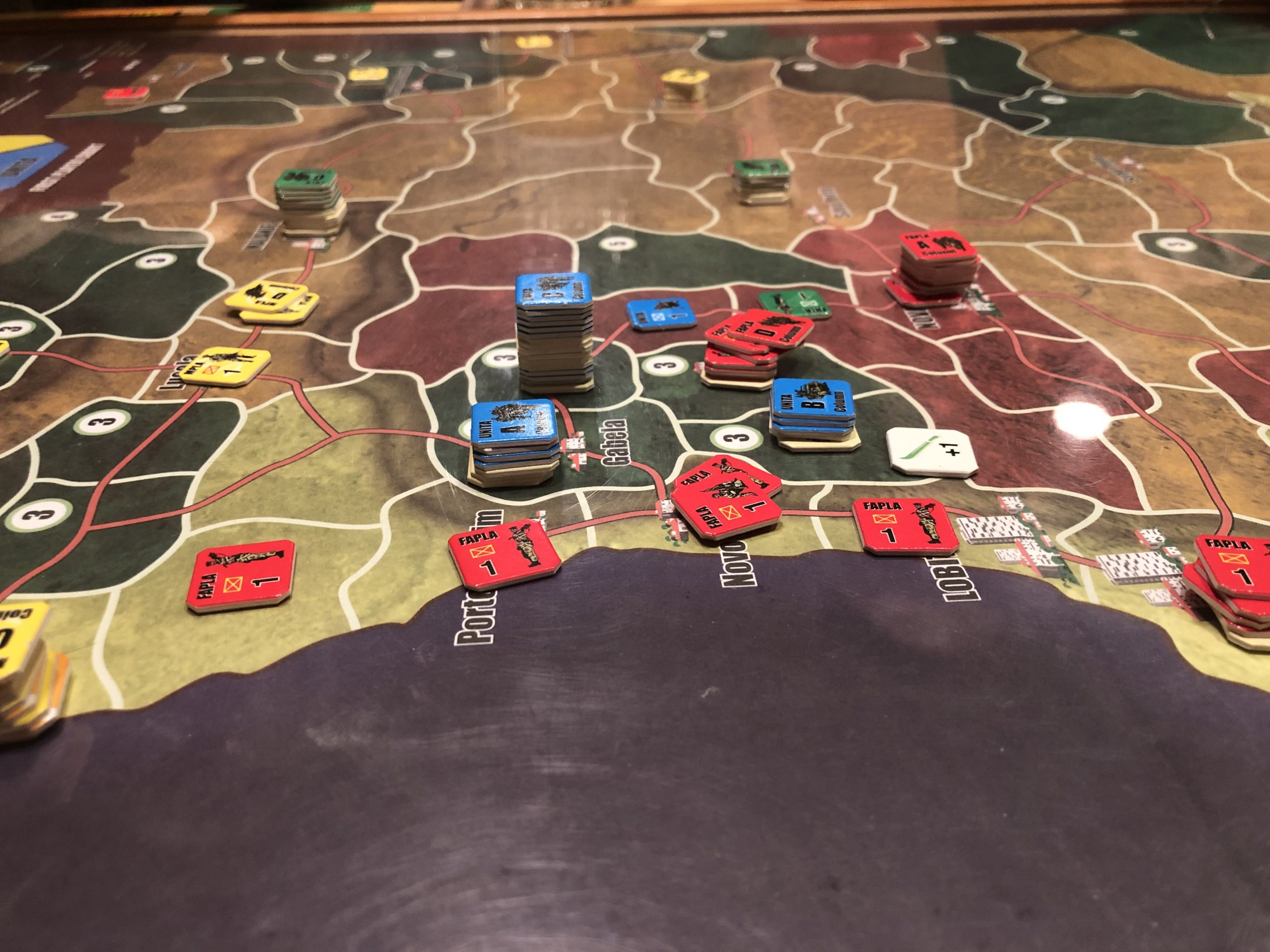
Each force consists of mostly infantry units with armor, artillery, armored car, engineer and air units providing support. The factions in the game also get “covert support” which equates to supplies of special weapons such as mines, SAMs and anti-tank missiles.
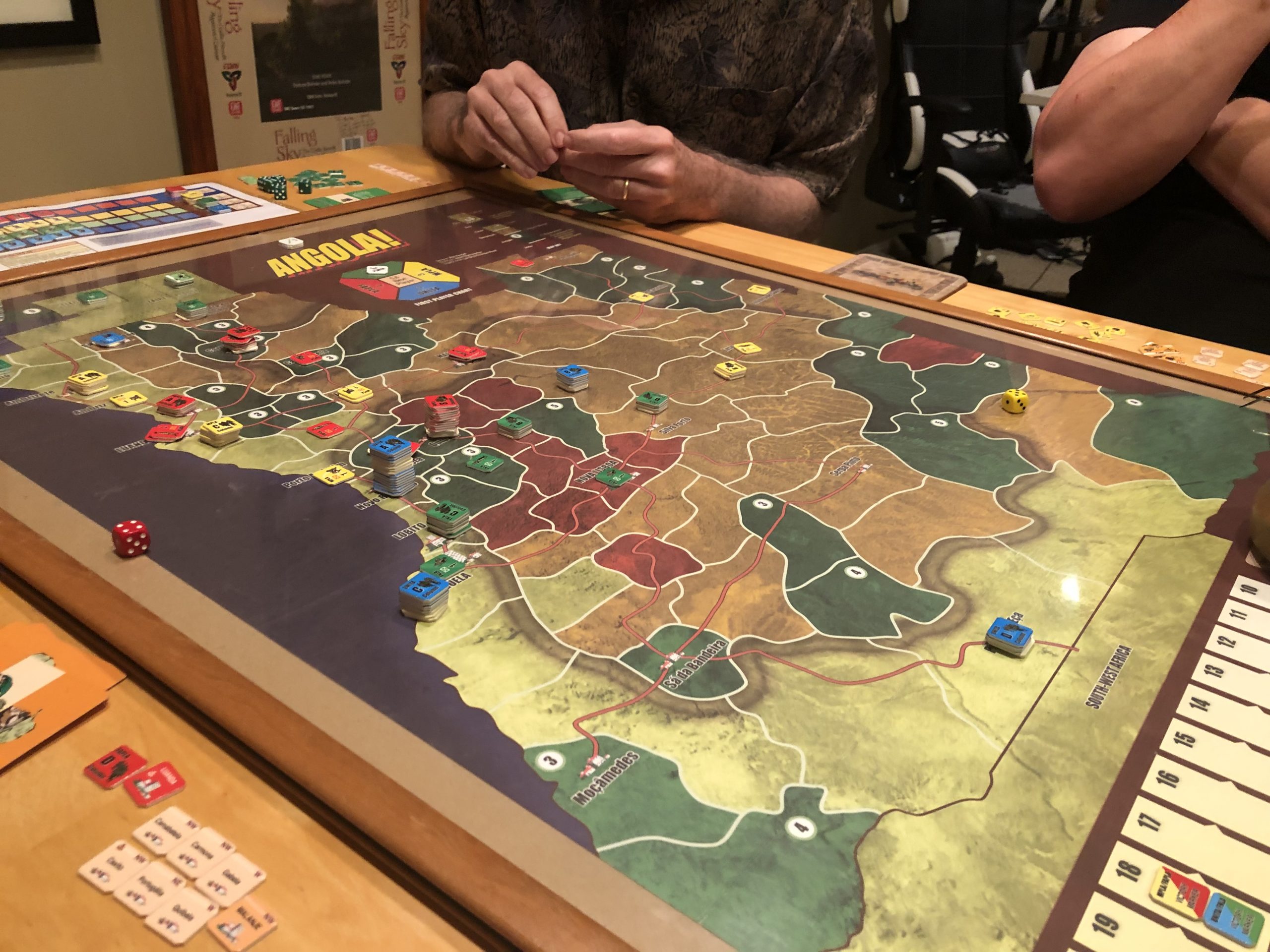
The game was first published in 1988 (re-released in 2011) and features some mechanics that were groundbreaking when the game first hit the market. Even today the unique mechanics dictate a fluid game where each turn challenges you to win the conflict for the final turn on the game. Before each turn the players select an operations hand which is the order, they will command their forces during the game.
Each turn the play order is randomized with who gets to play a card first and then each player plays a card from their hand until all cards in the hand have been used and the turn ends. I really liked how you had to sequence your moves before the turn, it forces you to plan out your strategy each turn. Of course, the enemy gets a vote into this sequence, and you are faced with executing your plan or reacting to enemy with each card you play.
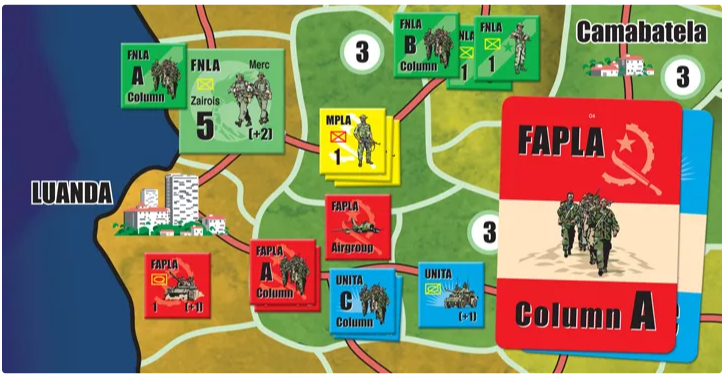
Combat occurs when forces two different sides are in the same location on the map. The combat system is also unique and uses a step-by-step process where you allocate support such as air and artillery before you get into the ground combat. Instead of rolling dice on a CRT, the players determine the odds then roll based on terrain to see if the odds change. The final odds determine what happens in the combat for that area.
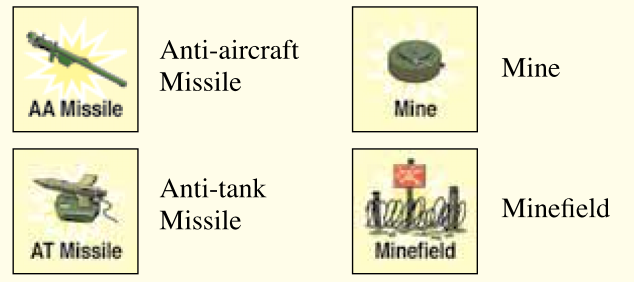
Our Afternoon
I was paired with Jason on the communist team with me playing the FAPLA and Jason running the MPNA and our opponents had Volko playing the FNLA with Kevin pushing the UNITA forces on the map. The first thing I noticed is how the terrain and set-up locations of the forces really dictates how the game is played.
The communist forces control the center of the map with the UNITA forces coming in from the south and the FNLA entering the map from the north. As the game progressed, Jason and I were in some early trouble. Between my poor moves and Jason’s consistent rolling of “1’s and 2’s” we were in danger of losing the game by turn three. What saved our defeat was the lunch break where we had a quick minute to talk over our game plan. We decided to concentrate on pushing Kevin out of the pocket of coastal town and cities he captures over the first few turns and within 2 turns we were on the verge of winning the game.

Perhaps this is due to our reading of the map better. We had the inside lines and were able to support one another in our attacks, where opponents could not do the same since they came into the game from opposite sides of the map. We also made some bold moves which worked for us which our opponents could not counter because of the distances they had to cover to get into combat. Jason and I ended up winning the game in an automatic victory two turns early. Despite the win, the game was a near run affair that could have gone either way.
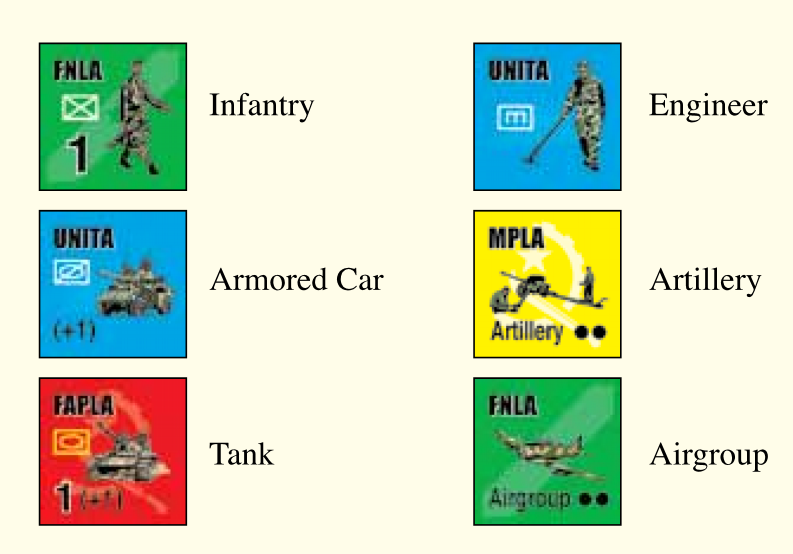
Angola’s Balance
Based on the play of the previous game, Volko decided to add some home-brewed rules where the UNITA and FNLA had to play an extra “pass” card in their operations hand. This slowed down the inevitable steam roller these two forces can build up and sweep the map of the communist forces. This rule obviously balanced out the game since the Reds won.
The game also has some mechanics which balance play. If your side loses a turn, they can receive aid in the form of troops from Cuba, South Africa and various mercenary forces. This gives a player more toys to throw into battle during the next turn. The game also has other great balancing mechanics that keeps the game fun and fluid.

Each turn it seemed that one of the two sides were in reach of ending the game early and that see-saw play went on until my team was able to secure a victory.
Overall Thoughts
Angola is a great game and shows how great mechanics can make or break a game. The game does a lot of the little things right and these details makes for a challenging and fun experience. I have often thought about picking this game up and I now feel I made a mistake missing out on it for all these years. Another thing I noticed during the game is that it really is meant to be played as a four-player game. Other than location the forces are evenly matched, and a gamer play style really comes out and plays a role on how the game turns out.
If you had any desire to play Angola, I recommend you do not wait and pick up a copy.
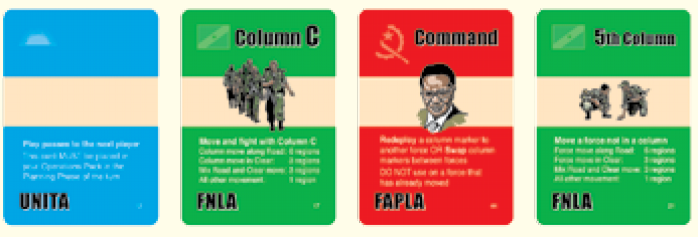
I hope my barley adequate performance earns me a future invite to game with these guys. If my gaming skill can’t get me the invite, I should point out that I am funnier than Sebastian.
